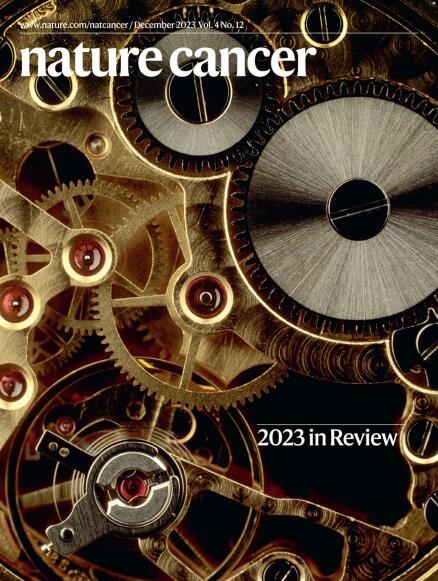Evolutionary and immune microenvironment dynamics during neoadjuvant treatment of esophageal adenocarcinoma
IF 28.5
1区 医学
Q1 ONCOLOGY
引用次数: 0
Abstract
Locally advanced esophageal adenocarcinoma remains difficult to treat and the ecological and evolutionary dynamics responsible for resistance and recurrence are incompletely understood. Here, we performed longitudinal multiomic analysis of patients with esophageal adenocarcinoma in the MEMORI trial. Multi-region multi-timepoint whole-exome and paired transcriptome sequencing was performed on 27 patients before, during and after neoadjuvant treatment. We found major transcriptomic changes during treatment with upregulation of immune, stromal and oncogenic pathways. Genetic data revealed that clonal sweeps through treatment were rare. Imaging mass cytometry and T cell receptor sequencing revealed remodeling of the tumor microenvironment during treatment. The presence of genetic immune escape, a less-cytotoxic T cell phenotype and a lack of clonal T cell expansions were linked to poor treatment response. In summary, there were widespread transcriptional and environmental changes through treatment, with limited clonal replacement, suggestive of phenotypic plasticity. Graham and colleagues analyzed locally advanced esophageal adenocarcinoma clinical trial patient samples and identified major changes in gene expression profiles and immune microenvironment composition independent of changes in clonal composition.

食管癌新辅助治疗中的进化和免疫微环境动力学。
局部晚期食管癌仍然难以治疗,其耐药性和复发的生态和进化动力学尚不完全清楚。在MEMORI试验中,我们对食管腺癌患者进行了纵向多组分析。对27例患者在新辅助治疗前、中、后进行多区域、多时间点全外显子组和配对转录组测序。我们发现在治疗过程中主要的转录组变化伴随着免疫、基质和致癌途径的上调。遗传数据显示克隆扫描通过治疗是罕见的。成像细胞术和T细胞受体测序显示治疗期间肿瘤微环境的重塑。遗传免疫逃逸的存在、细胞毒性较低的T细胞表型和缺乏克隆T细胞扩增与治疗反应差有关。总之,通过处理,存在广泛的转录和环境变化,克隆替代有限,提示表型可塑性。
本文章由计算机程序翻译,如有差异,请以英文原文为准。
求助全文
约1分钟内获得全文
求助全文
来源期刊

Nature cancer
Medicine-Oncology
CiteScore
31.10
自引率
1.80%
发文量
129
期刊介绍:
Cancer is a devastating disease responsible for millions of deaths worldwide. However, many of these deaths could be prevented with improved prevention and treatment strategies. To achieve this, it is crucial to focus on accurate diagnosis, effective treatment methods, and understanding the socioeconomic factors that influence cancer rates.
Nature Cancer aims to serve as a unique platform for sharing the latest advancements in cancer research across various scientific fields, encompassing life sciences, physical sciences, applied sciences, and social sciences. The journal is particularly interested in fundamental research that enhances our understanding of tumor development and progression, as well as research that translates this knowledge into clinical applications through innovative diagnostic and therapeutic approaches. Additionally, Nature Cancer welcomes clinical studies that inform cancer diagnosis, treatment, and prevention, along with contributions exploring the societal impact of cancer on a global scale.
In addition to publishing original research, Nature Cancer will feature Comments, Reviews, News & Views, Features, and Correspondence that hold significant value for the diverse field of cancer research.
 求助内容:
求助内容: 应助结果提醒方式:
应助结果提醒方式:


